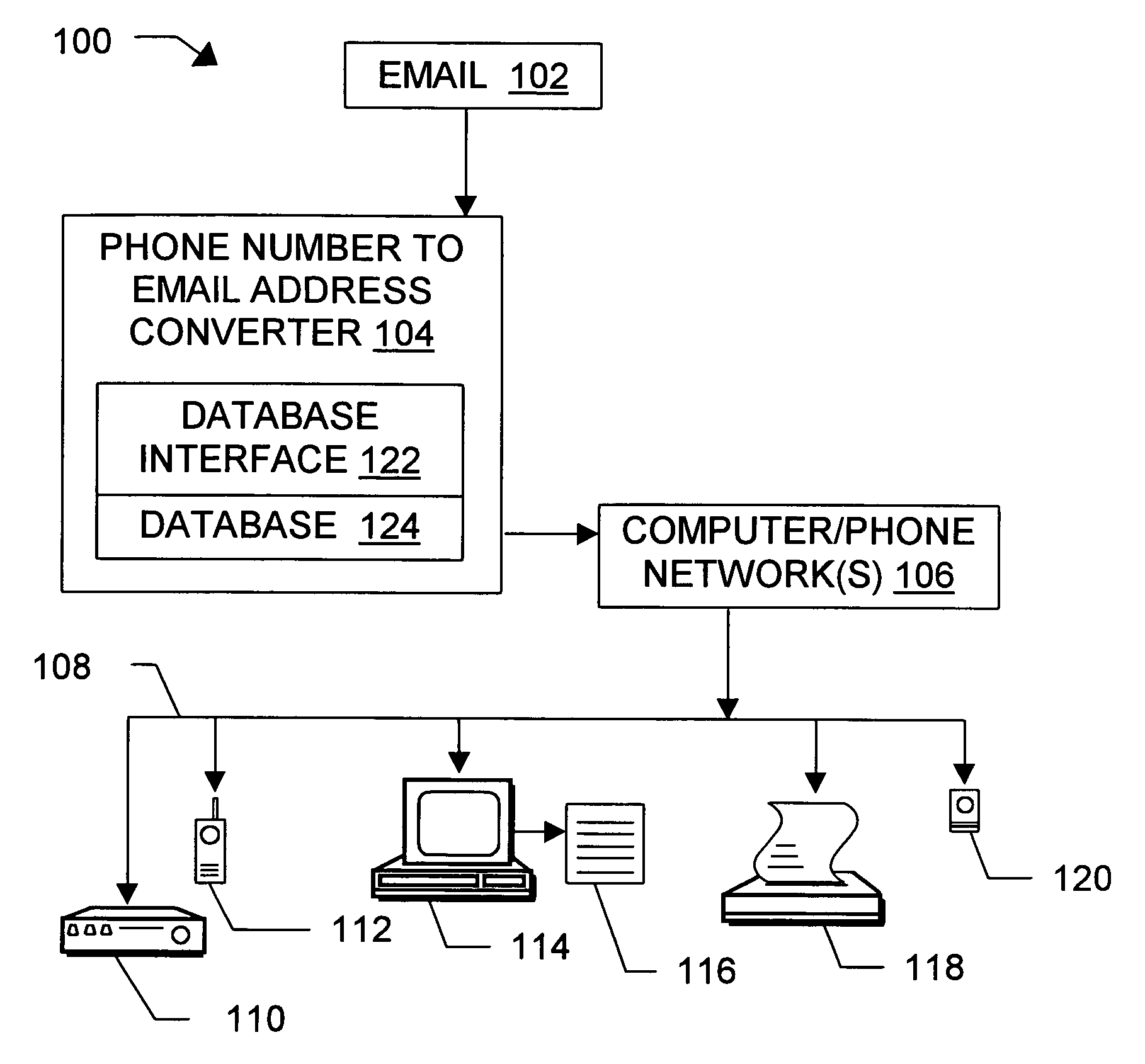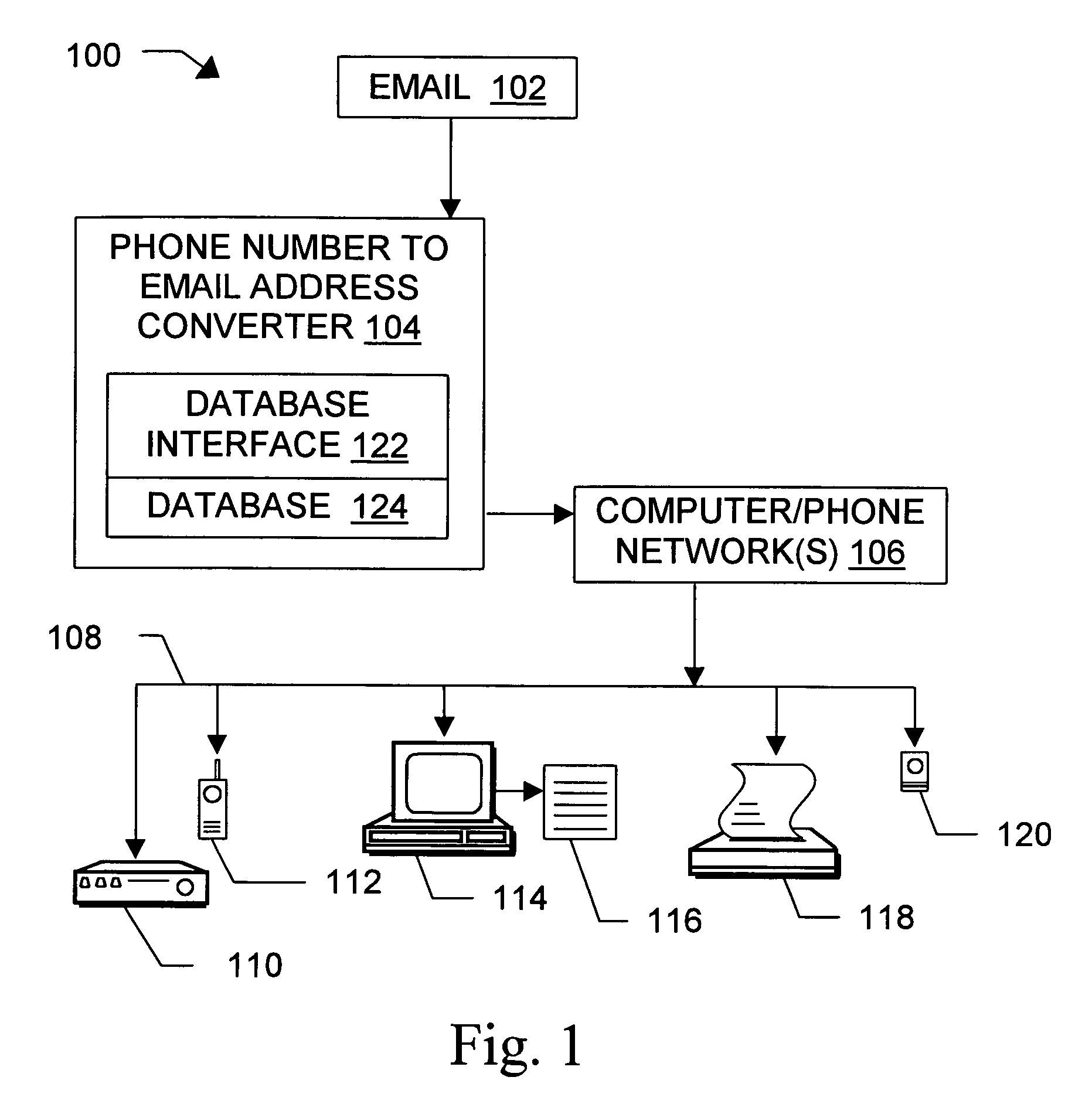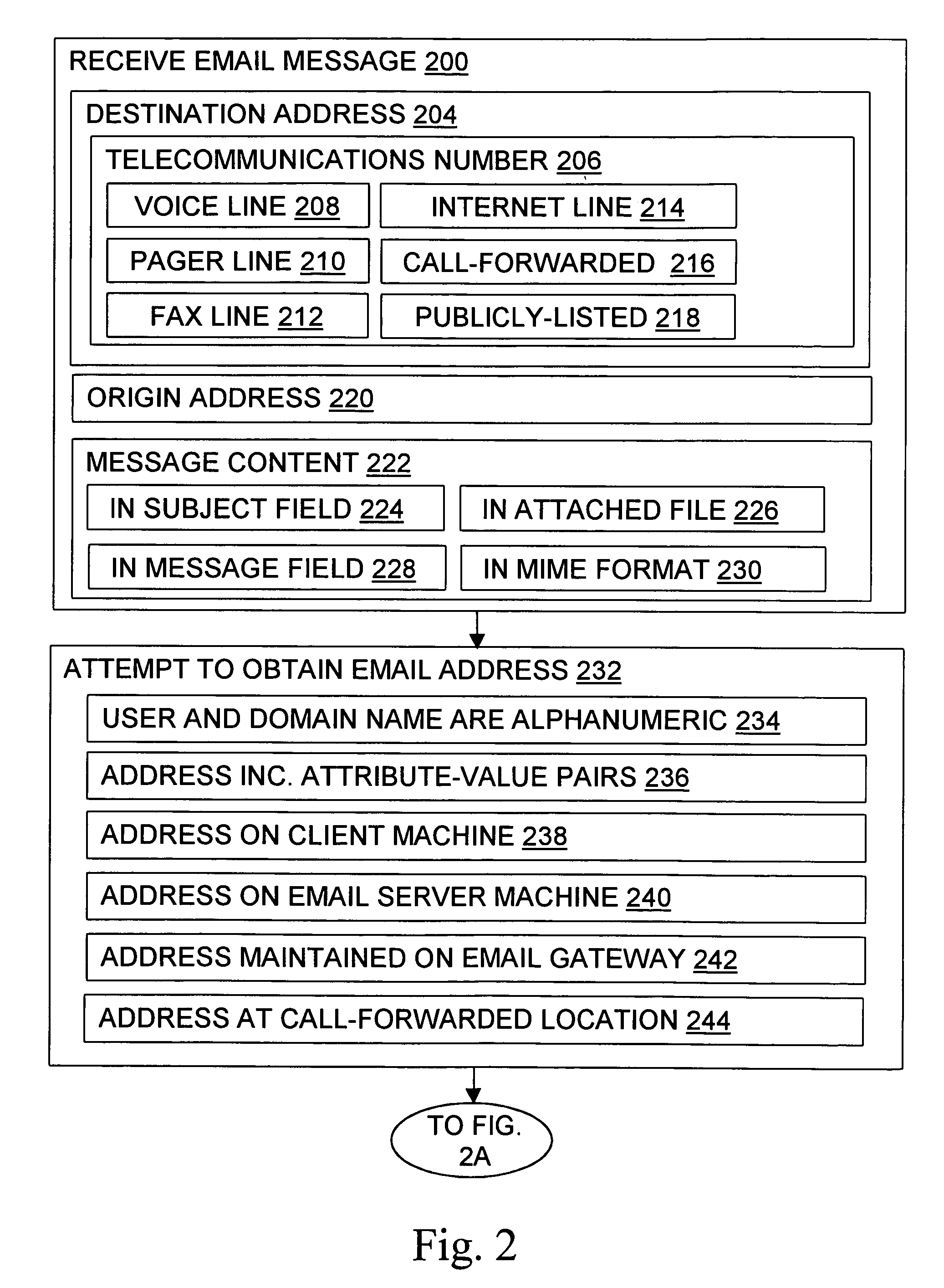Message routing
a message originator and message technology, applied in the field of message routing, can solve the problems of imposing an awkward addressing syntax on message originators, not combining and known approaches that have not combined features and capabilities into an architectur
- Summary
- Abstract
- Description
- Claims
- Application Information
AI Technical Summary
Benefits of technology
Problems solved by technology
Method used
Image
Examples
Embodiment Construction
[0029]The present invention relates to methods, systems, signals, and configured storage media for message routing. The invention allows message originators to use telephone and fax numbers as email and / or web addresses. In particular, the invention supports use of publicly listed phone or fax numbers as email addresses without company or similar domain names as apparently required by the VPIM approach. The telephone and fax number addresses (which may include area codes, extensions, and the like) are converted by the system into IP addresses, Ethernet addresses, username-domain name addresses, attribute-value pairs, and / or other conventional email addresses or addressing indexes.
System Overview
[0030]FIG. 1 gives an overview of a system 100 according to the invention. The email 102 itself is carried over one or more networks 106 to the destination(s) indicated by the email's address. The term “email” includes text generated using a computer and an email program, such as Microsoft Ou...
PUM
 Login to View More
Login to View More Abstract
Description
Claims
Application Information
 Login to View More
Login to View More - R&D
- Intellectual Property
- Life Sciences
- Materials
- Tech Scout
- Unparalleled Data Quality
- Higher Quality Content
- 60% Fewer Hallucinations
Browse by: Latest US Patents, China's latest patents, Technical Efficacy Thesaurus, Application Domain, Technology Topic, Popular Technical Reports.
© 2025 PatSnap. All rights reserved.Legal|Privacy policy|Modern Slavery Act Transparency Statement|Sitemap|About US| Contact US: help@patsnap.com



